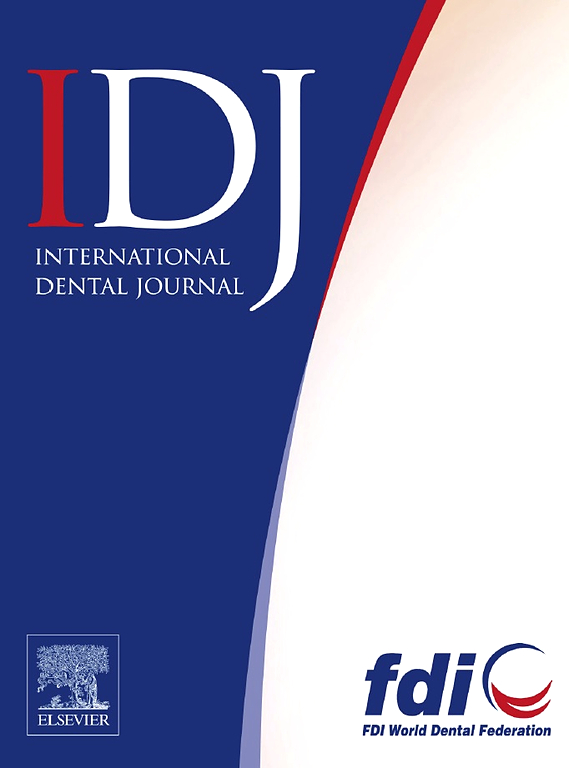Evaluating the Accuracy and Performance of ChatGPT-4o in Solving Japanese National Dental Technician Examination
IF 3.2
3区 医学
Q1 DENTISTRY, ORAL SURGERY & MEDICINE
引用次数: 0
Abstract
Introduction and aims
With advancements in artificial intelligence (AI), its role in education and examinations is expanding. This study aimed to evaluate the accuracy and response capability of ChatGPT-4o in solving questions from the Japanese National Dental Technician Examination (JNDTE). By analysing the AI’s answers to a variety of questions, including both text-based items and those containing visual information across multiple domains, we examined the practicality of using AI as a supportive tool for learning and assessment in dental education.
Materials and methods
A total of 400 JNDTE questions (2018-2022) were analysed using ChatGPT-4o. Standardized prompts were used, and statistical analysis was conducted using Fisher’s exact test.
Results
The AI demonstrated high accuracy in basic knowledge-based questions but lower accuracy in specialized topics requiring technical skills. Notably, accuracy decreased when visual elements (figures, tables, and photographs) were present. The highest accuracy was observed in ‘Dental materials, laboratory equipment, and processing technology’ (84.1%), while the lowest was in ‘Orthodontic technology’ (46.2%) and ‘Pediatric dental technology’ (50.0%). The AI particularly struggled with interpreting radiographic images and procedural workflows.
Conclusions
ChatGPT-4o demonstrated reasonable proficiency with JNDTE-related knowledge, suggesting its potential application as a supplementary tool in dental education. However, its limitations in processing visual and technical content highlight the need for advancements in AI-driven image recognition and simulation-based learning.
Clinical Relevance
The findings of this study highlight the potential application of AI models like ChatGPT-4o as a supplementary tool in dental technician education and examination preparation. Enhancing AI-driven image recognition and simulation-based learning could improve its effectiveness in dental education and clinical training, ultimately contributing to better learning outcomes and skill development for future dental technicians.
chatgpt - 40在日本国家牙科技师考试中的准确性和性能评价
随着人工智能(AI)的进步,它在教育和考试中的作用正在扩大。本研究旨在评估chatgpt - 40在解决日本国家牙科技师考试(jnte)问题中的准确性和反应能力。通过分析人工智能对各种问题的答案,包括基于文本的项目和跨多个领域包含视觉信息的项目,我们研究了将人工智能作为牙科教育学习和评估的辅助工具的实用性。材料和方法使用chatgpt - 40对2018-2022年共400个jnte问题进行分析。采用标准化提示,采用Fisher精确检验进行统计分析。结果人工智能在基于基础知识的问题上准确率较高,但在需要技术技能的专业问题上准确率较低。值得注意的是,当视觉元素(图形、表格和照片)出现时,准确性会下降。准确度最高的是“牙科材料、实验室设备和加工技术”(84.1%),最低的是“正畸技术”(46.2%)和“儿科牙科技术”(50.0%)。人工智能在解释放射图像和程序工作流程方面尤其困难。结论atgpt - 40对牙病治疗相关知识掌握程度较好,可作为口腔教育辅助工具。然而,它在处理视觉和技术内容方面的局限性突出了在人工智能驱动的图像识别和基于模拟的学习方面取得进展的必要性。本研究结果强调了chatgpt - 40等人工智能模型作为牙科技师教育和考试准备的补充工具的潜在应用。加强人工智能驱动的图像识别和基于模拟的学习可以提高其在牙科教育和临床培训中的有效性,最终有助于提高未来牙科技师的学习效果和技能发展。
本文章由计算机程序翻译,如有差异,请以英文原文为准。
求助全文
约1分钟内获得全文
求助全文
来源期刊

International dental journal
医学-牙科与口腔外科
CiteScore
4.80
自引率
6.10%
发文量
159
审稿时长
63 days
期刊介绍:
The International Dental Journal features peer-reviewed, scientific articles relevant to international oral health issues, as well as practical, informative articles aimed at clinicians.
 求助内容:
求助内容: 应助结果提醒方式:
应助结果提醒方式:


